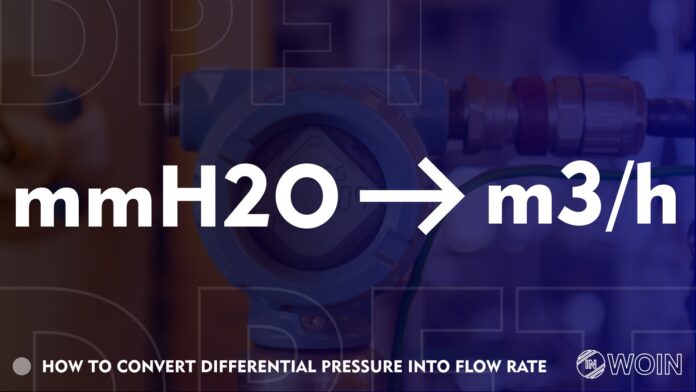Introduction
In this article, we are talking about how a differential pressure-type flow meter works and how we convert differential pressure values into the flow rate.
In differentiating pressure type flow measuring method the flow through the pipe is directly proportional to the square root of differential pressure across restriction elements.
So, we have to perform the square root of differential pressure to know the valve of flow through the pipe.
The square root of the differential pressure value is either done from the transmitter side or the control system side.
Flow Conversion (Linear to Square Root Conversion)
Many times, we work on differential pressure-type flow meters. Differential pressure type flow meter is widely used for measuring the flow of liquids as well as gases in many services.
In the datasheet of the differential pressure type flow meter, you can see two types of ranges. One range is in mmH2O and other range is in m3/hr.
The reason behind giving two ranges is that the flow is proportional to the square root of the differential pressure.
Many engineers find it difficult to convert from one range to another range while doing the calibration. Today in this article we will see how to convert mmH2O to m3/hr using a standard method.
First, keep the below-mentioned formula in mind.
Square Root Output = 4 mA + 4 * (√ (Linear Input - 4 mA))
Example to convert differential pressure into Flow valve
Now suppose the input to the flow meter is in the range of 0 mmH2O to 10000 mmH2O. Output is in the range of 0 m3/hr to 1000 m3/hr. So, what will be the output corresponding to 5000 mmH2O?
For this, we first need to convert 5000 mmH2O into equivalent mA in the range of 4 mA to 20 mA. (It is 12 mA obviously). Now plug 12 mA into the above formula.
We get,
1. Square Root Output = 4 mA + 4 * (√ (12 mA – 4 mA))
2. Square Root Output = 4 mA + 4 * (√ 8 mA)
3. Square Root Output = 4 mA + 4 * 2.828 mA
4. Square Root Output = 4 mA + 11.313 mA
5. Square Root Output = 15.313 mA
So, in the given flow range of 0 m3/hr. to 1000 m3/hr. the value corresponding to 15.313 mA is (15.313 mA is approx. 70.706 % of the 4 mA to 20 mA range).
70.706 % of 1000 m3/hr will be 707.06 m3/hr which is our required value of flow.
Below are a few questions from the example shown above. Do calculations and click on the button below to know the answers. If you have any doubt about solving these examples, then do comment for a full solution.
1. Flow corresponding to 2500 mmH2O
Solution: 2500 mmH2O corresponds to 8 mA in the 4 mA to 20 mA range. According to the formula, we get 12 mA. So, the flow will be 500 m3/hr
2. Flow corresponding to 7500 mmH2O
Solution: 7500 mmH2O corresponds to 16 mA in the 4 mA to 20 mA range. According to the formula, we get 17.856 mA. So, the flow will be 8660 m3/hr.
EndNote
I hope all this information and resources on differential pressure type flow measurement will help you in the future, And I hope these resources are helping you in your career and in your professional life.
I want to create more and more high-quality content like this. Please consider supporting me on by me a coffee platform.
If you have any suggestions then feel free to ask in the comments and through email id.
you want to write an article on the website, please contact us by this mail id: contact@worldofinstrumentation.com
And If you like this post, you can also like my previous article on Ultrasonic vs Radar Level Measurement.
And you can also follow our LinkedIn group which is specially made for sharing information related to Industrial Automation and Instrumentation.


